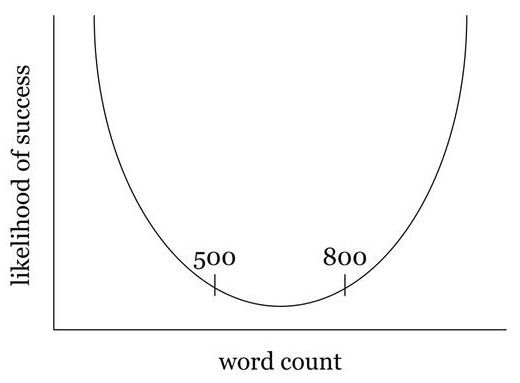Last week I looked at the potential of evergreen content for SEO purposes, showing how it can work over time.
This time I’ll look at how to plan and create content like this, where to find ideas, and the different formats you can use.
Planning and idea generation
Ideas for content come from a range of sources, but here a few places to look for inspiration…
Matching your product to the content
Part of the challenge around evergreen is the nature of the product or service you’re looking to draw attention to.
For Search Engine Watch this isn’t too tricky. We’re about providing advice and insight into (primarily) search marketing, so that’s what we do.
However, it isn’t so easy for some businesses. Exciting brands like Lego can create (or get their fans to create) content easily thanks to the product.
But what if you’re selling pest control solutions, or insurance?
The deBugged blog from pest control firm Ehrlich is one example. Content such as guides to termites is evergreen, while there’s also some playful posts, insect brownie recipes for one.
Identify common user/customer problems
This is a great starting point for content creation as it ensures that the focus is on solving genuine issues.
Take a look at this from Repair Clinic. Its drop-down menus allow customers to navigate according to the problem they’re experiencing.
Now, this is a useful way to navigate, but it also reveals something about the process of creating content.
Either from keyword research, or more likely an analysis of common customer questions and issues, Repair Clinic has identified some of the reasons customers look for repair information.
It has then created the page to match the query, and produced some useful resources for customers.
From an SEO perspective, it works beautifully. I’ve taken a few of the common problems from the drop-down menu, and invariably you’ll see Repair Clinic in a prominent position.
So, Repair Clinic has found common user problems and created content which addresses those issues.
The fact that this content is easy to find in the SERPs should ensure that the company attracts plenty of relevant traffic, and sells a few spare parts.
Mining your data
Ideas for content are all around, and many are there in your site’s data.
For example, you could look at your site search data for common queries and issues which content could address.
Do your users’ on-site searches reveal issues that haven’t been addressed by your current content? Do any topics stand out?
What has worked before?
Look back through analytics data. Identify the evergreen posts you already have on your site.
This is easy enough, just take a look at the top content fro the last year or two. Are there posts with recurring traffic over that period?
Evergreen content should look something like this:
As we can see, it’s receiving a consistent amount of traffic over a long period of time, just over a year in this case.
It doesn’t necessarily have to be huge amounts of traffic. If the content is relevant to your products or services, the important thing is that it’s attracting the right kind of visitors.
Once you’ve identified your own evergreen content, think about what these pages have in common:
- Headlines. Is there a pattern? In our list above, and other reports, common factors include compelling headlines, lists, and how-to guides.
- Topics. What are the common themes and topics that perform well?
- Article style. Are they stats based articles? Infographics? Long-form content?
- Presentation. How are articles presented? I find lots of relevant charts, example screenshots and clear headings make an article more readable and hence more likely to become evergreen.
Look at social data
Using social tools such as buzzsumo you can identify the posts that perform well over time on social media.
This doesn’t necessarily equate to consistent traffic, but it quite often does and provides more inspiration.
Search rankings
See which terms you’re ranking for and which pages are ranking well for those terms.
This should help you to identify the evergreen content that is already working, as well as providing ideas for new content.
For ideas, I’ll often look for search terms where there is room for improvement. Maybe terms where rankings have slipped due to older content, or where we’re near the top of page two.
Updating and keeping content fresh
An easy way to create evergreen content, and one which follows on from the previous points, is to refresh and rewrite existing evergreen pages.
We’ve done this once or twice with SEW content. For example, this Facebook cheat sheet article from 2013 has been consistently popular, but the information within will change over time.
So, we created a social media image size infographic with more up to date information. It was published in December, so it’s early to judge whether or not it will be evergreen, but it has been popular so far.
Some sites will simply update the content and republish posts as new. It’s a tactic which can work and something I’ve experimented with in the past.
In short, with an update and a new publish date, you can attract extra traffic, links and shares, and it can boost the rankings for that page as Google sees fresh rather than refreshed content.
However, I find it more honest and transparent, and more useful for readers, to create new articles based on older content. You can always use the older pages to link to the new version, and vice versa.
Evergreen content formats
These article formats have worked well, and can be adapted for different sites and topics.
Go niche
Don’ be afraid to get into the detail on posts. Evergreen content isn’t all about popularity, it’s about delivering the right kind of traffic over time.
For example, a post on using redirects may seem niche to some, but for a site like this it can deliver consistent long tail traffic.
e.g: Guide to 301 redirects for SEO
How-to guides
How to guides fit very well with this site’s ethos, and work well over time as they provide practical guidance for users.
They also perform well in search for the same reason, as well as the fact that people will often append searches with ‘how to’.
E.g: Internal linking for SEO: examples and best practices
Curation
Listing useful tools or stats adds value for users and creates a useful resource which keeps people coming back.
For example, this post on free SEO tools has been in the top 10 SEW posts for the past couple of years.
Lists
Some people may dislike them, but the truth is that lists work very well.
Indeed, they make up roughly 70% of our most popular articles over the past few years.
They work principally because they tell the potential reader that they will be easy to scan and digest, and also appeal to people’s curiosity.
E.g: 14 ways to reduce your site’s bounce rates
Go long-form
Longer articles tend to be more comprehensive and can provide readers with much of the information they need on a given subject.
There is a belief that the internet has destroyed people’s attention spans, and that longer articles are to be avoided, but I don’t subscribe to that.
Indeed, the Quartz curve is a good example. it found that articles of between 500 and 800 words weren’t performing as well.
The reason? More than 500 words but less than 800 is too long to be easily digestible yet too short to be in-depth. It’s a kind of no-man’s land.
While the exact word counts may differ, I’ve seen the same thing on sites I’ve worked on. So, this article is 1,336 words long…
In summary
There isn’t necessarily a magic formula for creating evergreen content, its more something to aim for.
You can create a comprehensive guide to a topic but, for various reasons, sometimes they just don’t work over time.
However, if you attempt to produce quality content with an eye on SEO that aspires to be evergreen, you’ll get there a lot of the time.
The article How to plan and create evergreen content was first seen from https://searchenginewatch.com








No comments:
Post a Comment